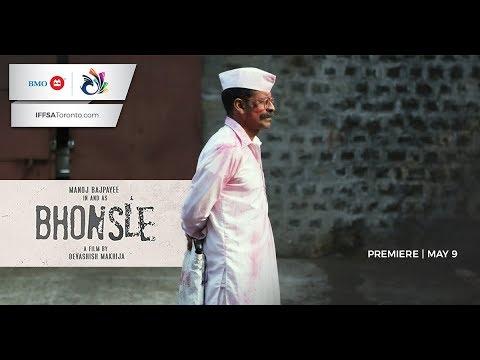There are films that you watch to be entertained - films that you watch mindlessly, whose fictional
universes you can escape to with no demands to remain grounded in your reality. Bhonsle is not
that film. It is impossible to disentangle yourself from the characters on screen, or the situations
they find themselves in. While newspaper headlines talk about the Marathi language being made compulsory in all Indian schools, and Delhi struggles to recover from the stomach-churning communal violence of February, watching the petty game of politics and bigoted
hatred between the Maharashtrian and Bihari communities play out in the film, and
slowly escalate into something dark and twisted, just feels like an extension of our own
reality.
The number of dialogues Bajpayee has in the film is probably restricted to single digits – he is silent, and more stagnant than stationary, for most of the film. His performance is, even then, one that is bound to stand out and stay in your mind for a long time to come. His movements are weary and languid, but his eyes are arrestingly expressive, and his moustache even more so. His facial muscles strain, quiver and fall disappointedly, so that you wonder why films ever needed dialogues to convey emotions.
Bhonsle is a film that feels as liberating at certain points as it is suffocating in others. The cinematography is exquisite and the performances not only engaging, but memorable. It will make you want to hug the screen, then promptly scream at it. Bhonsle is a film that you not only watch, but experience – it’s only horrifying that the experience is one that we continue to live in even after we exit the theatre.
Written by Sanjana Bhagwat
The film is loaded with symbolism, but never leans on them. Its aesthetic, pregnant with poignancy, blends easily with the story. The fleshed-out characters and tumultuous contexts are complemented with perfect mise-en-scènes – it is evident that nothing in the frame is accidental.
A symbol that runs through the film as a comparative thread to Bajpayee’s Bhonsle is that of Lord Ganesh, or rather, his idols. The opening scene oscillates between close up shots of an idol of the god being made and brought to life, and a resigned Bhonsle preparing to go home, leaving behind the only life he’s ever known, after his last day at his job at the police station. As he wearily unbuttons his faded, old uniform, a brand new silk cloth is draped over Ganpati’s torso, as he unpins his badge and shoulder straps, a shiny, silver armband is put on the idol, as he takes off his police hat, a bedazzled crown is placed on the idol’s head.The interpretations can be infinite, but one thing is certain – the iconic, historic figure in Indian and Maratha history, Shivaji Bhosale, might have valued and popularised the worship of Ganesha and the celebration of the Ganpati festival, but Bhonsle himself feels no desire to model his ancestor.
Bhonsle refuses to prioritise religious or communal demands over his humanity and kindness. He refuses to partake in hostile, discriminatory, and violent behaviour in the name of his community’s God. Communal strife and violence in the name of religion doesn’t stop until it has taken everything from the disembodied, dismembered body and soul, as is clear in the film.The number of dialogues Bajpayee has in the film is probably restricted to single digits – he is silent, and more stagnant than stationary, for most of the film. His performance is, even then, one that is bound to stand out and stay in your mind for a long time to come. His movements are weary and languid, but his eyes are arrestingly expressive, and his moustache even more so. His facial muscles strain, quiver and fall disappointedly, so that you wonder why films ever needed dialogues to convey emotions.
Bhonsle is a film that feels as liberating at certain points as it is suffocating in others. The cinematography is exquisite and the performances not only engaging, but memorable. It will make you want to hug the screen, then promptly scream at it. Bhonsle is a film that you not only watch, but experience – it’s only horrifying that the experience is one that we continue to live in even after we exit the theatre.
Written by Sanjana Bhagwat








